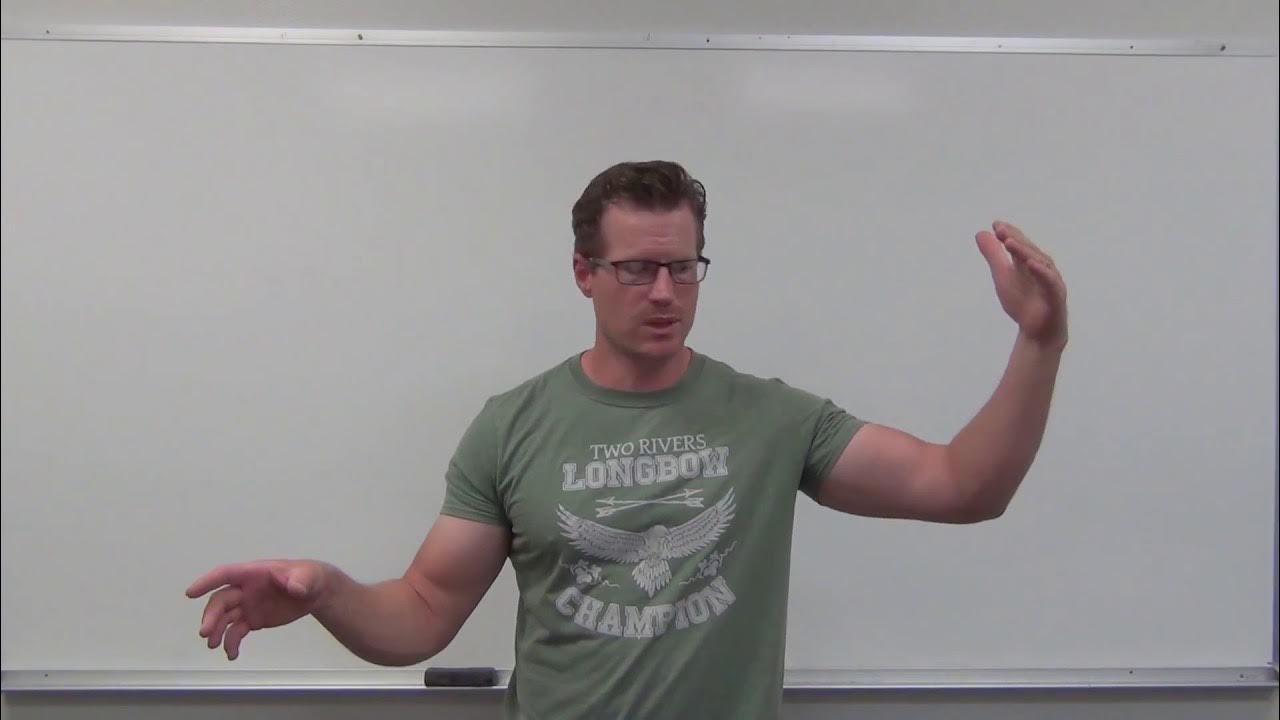Math Mistakes and Struggles
Summary
TLDRThe script discusses the importance of embracing mistakes and struggle in the learning process, particularly in math. It critiques the traditional view of mistakes as failures and promotes them as opportunities for brain growth, as highlighted by growth mindset research. The speaker advocates for challenging students, encouraging productive struggle, and creating an environment where mistakes are analyzed for learning. The script also reflects on global education practices, noting that countries like Finland and Singapore respect struggle and focus on depth over breadth in their curricula, providing valuable lessons for improving education in the United States.
Takeaways
- 😀 Mistakes should not be seen as negative; they are opportunities for brain growth and learning.
- 😀 Historically, mistakes were punished in education, fostering perfectionism and fear of failure in students.
- 😀 The brain grows and strengthens when we make mistakes, as synapses fire to create new connections.
- 😀 Creating a learning environment that encourages mistakes and struggles helps students grow.
- 😀 Growth mindset research, including work by Carol Dweck and Jason Moser, highlights the importance of mistakes for learning.
- 😀 Struggling with a task is essential for deep understanding and long-term retention of knowledge.
- 😀 Other countries, like Finland and Singapore, focus on deep understanding of subjects, not covering too many topics superficially.
- 😀 In the U.S., there is often too much content to cover, leading to shallow learning and less room for struggle.
- 😀 Productive struggle, such as tackling puzzles or coding, helps students improve their problem-solving skills.
- 😀 The key to teaching productive struggle is through conversation, providing supportive exercises, and celebrating perseverance.
- 😀 Teachers can help students learn how to struggle by setting up opportunities for challenge and reflection, as well as discussing the emotional journey of overcoming difficulty.
Q & A
Why do many students get upset when they make mistakes in math?
-Many students are conditioned to view mistakes as failures due to their past educational experiences, where mistakes were often marked negatively, leading to frustration, embarrassment, or anxiety about being wrong.
How do mistakes contribute to brain growth?
-Mistakes trigger the firing of synapses in the brain, promoting new neural connections and strengthening learning pathways. This process helps with brain growth and the development of new understanding.
What is the problem with the traditional approach to mistakes in education?
-The traditional approach often treats mistakes as negative, reinforcing a perfectionist mindset and causing students to avoid risks. This stifles growth and reduces opportunities for learning through trial and error.
What role does struggle play in student learning, especially in math?
-Struggle is essential for learning. It allows students to work through challenges, analyze mistakes, and develop a deeper understanding of the material. Struggling helps build resilience and critical thinking skills.
How can teachers shift the narrative around mistakes to benefit student learning?
-Teachers can reframe mistakes as valuable learning opportunities. Instead of labeling them as failures, educators should emphasize how mistakes contribute to brain development and progress, encouraging students to view struggle as part of the learning process.
What is 'productive struggle' in education, and why is it important?
-Productive struggle refers to the process of working through challenging problems without immediate help. It encourages perseverance, critical thinking, and deeper understanding, which are key for mastering any subject, including math.
How do other countries' educational approaches differ from the United States in handling mistakes?
-Countries like Finland, Sweden, and Singapore emphasize allowing students to engage with struggle and work through problems independently. In contrast, U.S. education often focuses on covering too many topics quickly, which may prevent deep, meaningful learning.
How can teachers teach students to embrace struggle?
-Teachers can introduce activities that require problem-solving, such as puzzles, games, or complex math problems, and encourage students to reflect on their struggles. By discussing how struggle leads to brain growth, teachers help students see it as a positive and productive part of learning.
What does the 'learning pit' concept represent, and how can it be used in teaching?
-The 'learning pit' is a visual representation of the struggle students experience while learning. Teachers can use it to show how learners feel frustrated during the process but can overcome it and emerge with a deeper understanding. Discussing this helps students recognize that struggle is essential for growth.
How does the idea of productive struggle relate to real-life challenges?
-Just like in learning, real-life challenges require perseverance, problem-solving, and resilience. Educators can use discussions about real-world struggles to help students understand how persistence through difficulty leads to success and growth in various aspects of life.
Outlines

Этот раздел доступен только подписчикам платных тарифов. Пожалуйста, перейдите на платный тариф для доступа.
Перейти на платный тарифMindmap

Этот раздел доступен только подписчикам платных тарифов. Пожалуйста, перейдите на платный тариф для доступа.
Перейти на платный тарифKeywords

Этот раздел доступен только подписчикам платных тарифов. Пожалуйста, перейдите на платный тариф для доступа.
Перейти на платный тарифHighlights

Этот раздел доступен только подписчикам платных тарифов. Пожалуйста, перейдите на платный тариф для доступа.
Перейти на платный тарифTranscripts

Этот раздел доступен только подписчикам платных тарифов. Пожалуйста, перейдите на платный тариф для доступа.
Перейти на платный тариф5.0 / 5 (0 votes)






